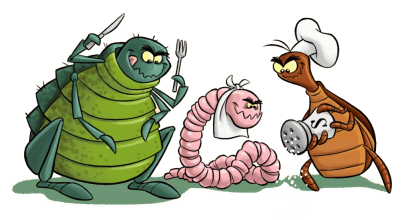While fleas are wingless, they have an enormous capacity to jump. This gives the adult flea the ability to jump on a pet very quickly as it moves through an area of infestation. The flea has four basic stages: egg, larva, pupa, and adult. Depending on the temperature and humidity, and whether these stages occur in an indoor environment, the complete life cycle can take as little as three weeks or as much as a year. Only the adult flea bites your pet. Once this insect lays its eggs, there is enough food with the egg to allow it to hatch and bring it through the larva stage. The larva will spend up to eight days feeding on debris until it spins a cocoon, bringing it to the pupal stage. The pupal period may last between a week and a year before changing into an adult flea. At that point, the adult develops and the cycle starts all over again.
If your pet becomes allergic to the flea, he will scratch incessantly even if he has few or no fleas on him at that particular moment. Since fleas spend 90% of their time off the dog, you may not actually see them on your pet when you examine him. The flea will however, have left its calling card, in the form of exereta. These specs of brownish, black debris are undeniable evidence that your dog has a flea problem. In Florida where it is warm all year long, these pests are active all year.



